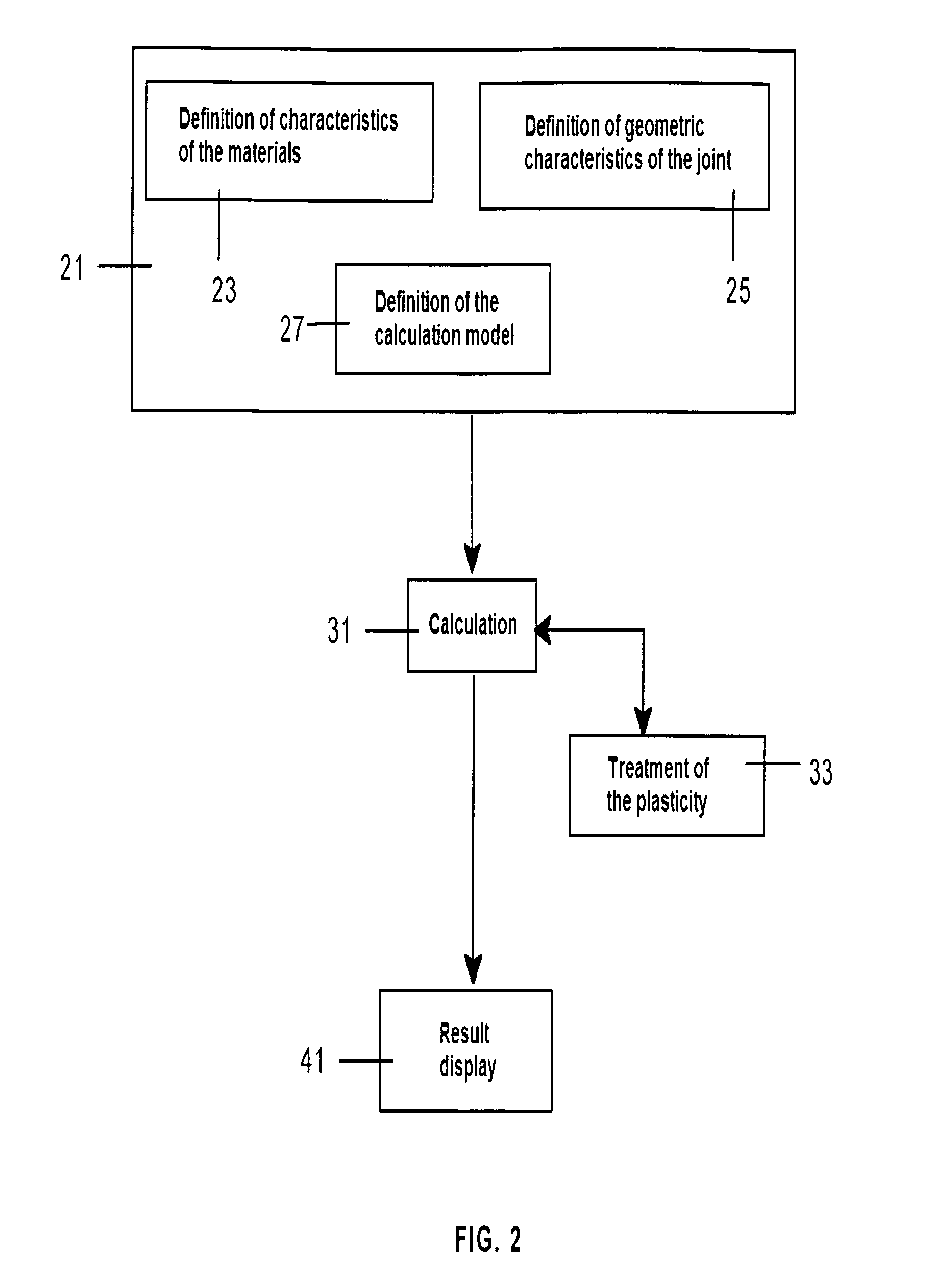Method for simulating the behavior of a bonded joint of two parts
a technology of bonded joints and composite materials, applied in the field of simulating the behavior of bonded joints of two parts, can solve the problems of not allowing parametric analysis, complex and expensive, and not (simply) contemplating two, and achieve the effect of facilitating the determination of failure criteria
- Summary
- Abstract
- Description
- Claims
- Application Information
AI Technical Summary
Benefits of technology
Problems solved by technology
Method used
Image
Examples
Embodiment Construction
[0036]Bonded joints such as that shown in FIG. 1, in which the stiffening elements 15 is joined to the panel 11 by means of an adhesive layer 13, are frequently used in the stiffened panels used in aeronautical structures.
[0037]The problem of these types of bonded joints is a problem with the following basic characteristics:[0038]It is a two-dimensional problem which can have a complex geometry.[0039]The stress condition in the three-dimensional adhesive body comprises tensile (or peel) stresses and shear stresses.[0040]Large displacements due to buckling phenomena or large rotations of the adhesive layer due to load eccentricities can occur.[0041]The adhesive has a plastic behavior under shearing.
[0042]An embodiment of the method of the present invention is described in detail below, comprising the following three main steps:[0043]Preparation step 21, including a sub-step 23 of defining the characteristics of the materials of the bonded joint, a sub-step 25 of defining the geometri...
PUM
 Login to View More
Login to View More Abstract
Description
Claims
Application Information
 Login to View More
Login to View More - R&D
- Intellectual Property
- Life Sciences
- Materials
- Tech Scout
- Unparalleled Data Quality
- Higher Quality Content
- 60% Fewer Hallucinations
Browse by: Latest US Patents, China's latest patents, Technical Efficacy Thesaurus, Application Domain, Technology Topic, Popular Technical Reports.
© 2025 PatSnap. All rights reserved.Legal|Privacy policy|Modern Slavery Act Transparency Statement|Sitemap|About US| Contact US: help@patsnap.com



